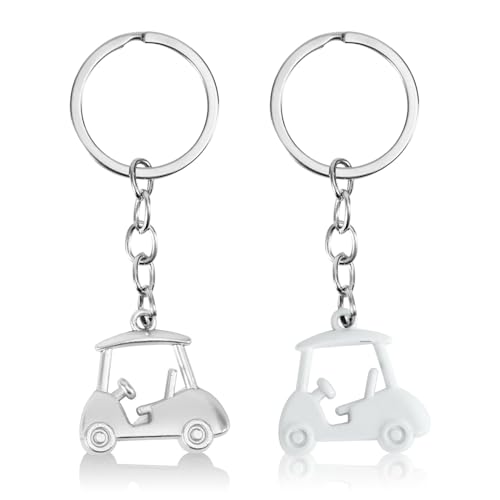Ever wondered how long a dozen golf balls should last you? Whether you’re a weekend warrior at the local club or a seasoned pro, the lifespan of your golf balls is something you’ve probably pondered.

Let’s face it, those little dimpled spheres can be quite the investment, and you want to get the most bang for your buck. So, grab your clubs, and let’s dive into the nitty-gritty of golf ball longevity.
You’ll be surprised to find out just how many rounds those dozen balls can endure, and what factors might send them to an early retirement. Ready to tee off?
Factors that affect the lifespan of golf balls
When you’re striving to shave strokes off your game, understanding what affects the lifespan of your golf balls is as crucial as nailing your swing. Golf ball longevity isn’t just about how many holes you play; it’s about a combination of factors.
One major aspect is the quality of the ball. Premium balls, designed for professional play, are engineered with top-tier materials that can withstand powerful swings. This means they often last longer than lower-cost options. However, they also come with a higher price tag.
Ball construction plays a significant role too. There are two main types: two-piece and multi-layer. Multi-layer balls, which include three or four layers, are crafted for performance and durability. The added layers help absorb the shock of impact but may still show wear and tear over time.
Let’s talk about your style of play. If you hit the ball hard with a high swing speed, anticipate a shorter lifespan for your golf balls. High swing speeds can cause more damage on impact, which means you might be reaching for a new ball more often.
Environmental factors are also at play. Balls that frequently end up in the woods, water hazards, or rough might get scuffed or lost. Plus, weather conditions like heat or cold can influence the ball’s physical properties, affecting performance and endurance.
The courses you play regularly hold clues about your golf balls’ lifespan. Playing on a course with lots of hard surfaces, such as cart paths or rocky outcrops, can be harsh on balls. On the flip side, plush fairways are more forgiving.
Your maintenance routine matters just as much. Regularly inspecting and cleaning your balls can help you detect any physical changes early on. It’s similar to reading the greens; the more attention you pay, the better your play.
Remember, even with the best care, every ball has its breaking point. It’s part of the game, and acknowledging that can not only save you from frustration but also help you know when it’s time for a fresh dozen. Keep these factors in mind, and you’ll be better equipped to evaluate the lifespan of your golf balls.
Understanding these elements won’t just help you manage your golf ball inventory, but it’ll also give you insight into the finer nuances of the game that could lower your scores in the long run.
Compression and durability: what you need to know
When you’re trying to shave strokes off your game, understanding the specifics of golf ball compression and durability is key. Compression refers to how much a golf ball deforms under the impact of your swing. This can greatly affect your performance, with low-compression balls often recommended for slower swing speeds and high-compression balls favored by players with faster swings.
Durability, on the other hand, pertains to the golf ball’s ability to resist wear, cuts, and scuffs over numerous rounds. High-durability balls are constructed to withstand the punishment from high-speed impacts, abrasive surfaces, and the occasional cart path adventure.
Here’s what you need to keep in mind:
- Lower compression balls typically feel softer and may help to absorb mishits, providing you with a more forgiving experience.
- Higher compression balls usually yield more control and are preferred by players with higher swing speeds to maximize distance.
Interestingly, there’s a common myth that higher compression equals less durability. However, advances in golf ball technology have debunked this, with many high-compression balls now incredibly long-lasting.
Choosing the Right Ball for Your Game
Picking a ball that matches your swing speed and skill level is crucial for enhancing your game:
- If your swing speed is below 90 mph, consider lower compression balls.
- For swing speeds above 90 mph, you’ll likely benefit from higher compression balls.
Most importantly, don’t be afraid to experiment. Sometimes, the best way to determine what works for you is to play different types of balls under various conditions.
Remember, while thinking about how long your dozen golf balls should last, consider your playing frequency, the courses you play, and how well you take care of your balls. Proper maintenance such as cleaning your golf balls regularly and storing them at moderate temperatures can extend their life, ensuring they perform at their best for as long as possible. Keep refining your skills, and you’ll not only know which balls suit you best but also get the most out of each one.

Average number of rounds a dozen golf balls can last
When you’re delving into the world of golf, understanding the lifespan of your equipment can be as crucial as mastering your swing. A frequently asked question you might have is how long a dozen golf balls should last you. The answer isn’t black and white, as it depends on numerous factors including your play style, the quality of the balls, and the terrain of the courses you prefer.
Seasoned players might notice that their golf balls last longer due to improved accuracy and less frequent loss. For you, as a golfer aiming to improve, it’s good practice to pay attention to how you manage your ball during the rounds. Better ball management often results in a longer lifespan for your golf balls.
Typically, a golf ball can endure anywhere from 1 to 7 full rounds before showing significant wear. But let’s crunch some numbers for a better understanding:
| Golf Balls | Rounds per Ball | Total Rounds for a Dozen |
|---|---|---|
| 1 Ball | 1 to 7 | 12 to 84 |
Remember, these figures fluctuate based on the course’s conditions; a ball might not make it through one particularly rough round while it may glide through several smooth ones.
As you progress in your journey to becoming a better golfer, you’ll find that a ball’s performance will start to falter long before it’s technically no longer playable. This performance dip can influence your score, which is why it’s vital to recognize when to retire a ball. Keep an eye out for cuts, scuffs, and loss of color as signs that a ball is reaching its end of optimal performance.

Finally, don’t hesitate to carry out some trial and error with balls of different qualities and brands. Every golfer’s game is unique, and what works for one might not be the best for another. You’re on a path to understanding not just your swing, but also how your equipment can elevate your game, starting with these small spheres that have such a great impact on your performance.
Signs that your golf balls need to be replaced
Imagine you’re on the fairway, ready to take a swing that’ll land you closer to the green. You’ve practiced and honed your skills, but what about your golf ball? Knowing when to replace your golf balls is crucial in ensuring optimal performance during each round. As a seasoned golfer, you’re always aiming to shoot lower scores and to do that, you can’t ignore the condition of your golf balls.
Start by inspecting the surface of your golf balls. Over time, they can become scuffed and lose their original aerodynamics, affecting their flight and distance. If you see that the dimples on your ball are fading or if you can feel scratches with your fingertips, it’s a clear sign that performance may be compromised.
Pay attention to the ball’s response during your game. A well-maintained golf ball will have a consistent feel off the clubface, providing the control needed for accurate shots. If you notice erratic behaviors – such as unusual spins or a lack of distance – these inconsistencies might be indicators that your golf balls are ready to retire.
Consider the behavior of the ball on the greens. Putting requires precision and a steady roll. When your ball no longer rolls true on the putting surface, this is often due to imperfections that have developed over time. Uneven wear or subtle deformations can drastically alter the trajectory of a putt, potentially leading to missed shots that could’ve been easy saves.

Lastly, factor in how many rounds your balls have been through. Even if they don’t show major signs of wear, performance degradation can be gradual and not always visible. It’s worth noting that advanced players may be more attuned to these changes and should trust their instincts if something doesn’t feel right during play.
Remember, your golf balls are an integral part of your game. Regular inspections and being aware of performance changes can make all the difference in maintaining your low handicap. Keep a few fresh sleeves at the ready, and don’t hesitate to make the switch when you sense it’s time. This subtle change can be the key to unlocking that next level in your game.
Tips for prolonging the lifespan of your golf balls
You’ve invested in a quality dozen, aiming for that edge in performance. It’s essential to make sure they last as long as possible while maintaining their integrity. Care and maintenance are paramount, not just for your clubs but for your golf balls too.
One crucial step you can take is to regularly clean your golf balls. Cleanliness impacts more than just appearance; a ball caked in dirt or grass will not perform correctly. After a round, take a moment to wipe down your golf balls with a damp cloth. If they’re particularly stubborn in their soiling, a gentle scrub with mild soap can work wonders.
Another tip, often overlooked, involves your play strategy on the course. Avoid hazards where possible. Those scenic water hazards and picturesque sand traps aren’t just a danger to your scorecard, they’re abrasive and potentially damaging to your golf balls. Choose your shots wisely and consider a safer lay-up to preserve the condition of your ball.
Storage conditions after your game also contribute to extending your golf ball’s lifespan. Never leave them rattling around in the trunk of your car, especially in extreme temperatures. Maintain optimal storage conditions by keeping your balls in a cool, dry place out of direct sunlight to prevent material degradation.
You should also rotate between multiple balls during a round. This practice can spread the wear evenly and keep the balls from getting beat up too quickly. Rotate your balls every few holes to ensure no single one takes an undue beating.
- Clean after each round.
- Avoid water and sand when possible.
- Store in cool, dry places.
- Rotate usage during play.
By incorporating these habits, you’ll maximize the life of each ball in your dozen, letting you focus on shaving strokes off your score rather than worrying about the longevity of your golf balls. Keep an eye on their performance whenever you’re out on the green, and you’ll not only play better but smarter.
Conclusion
So there you have it! With the right selection and care, your dozen golf balls can last longer than you might expect. Remember, it’s not just about the number of rounds they survive but also how you maintain and handle them. Keep them clean, steer clear of course hazards, store them properly, and rotate their use. These simple steps will help you get the most out of every ball. Now go ahead, hit the greens, and enjoy your game without worrying about running out of your trusty golf balls too soon!











